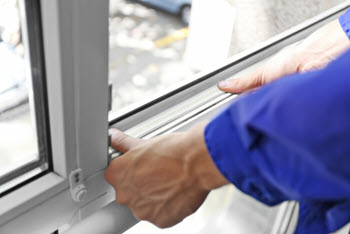Best Ways To Manage Dry Air In Your Home
 In the winter, you will find that the air in your home is dry. With low temperatures, comes low humidity. Cooler air outdoors is unable to hold very much moisture.
In the winter, you will find that the air in your home is dry. With low temperatures, comes low humidity. Cooler air outdoors is unable to hold very much moisture.
Warmer air is capable of holding more moisture than cooler air. However, the moisture content of the air inside a house does not increase by merely raising the temperature. The air will stay dry even if it is warm. Other factors affect moisture levels.
Why Dry Indoor Air Causes Problems
Contents
When the air indoors is dry, many problems will follow. Some of these issues include skin that develops cracks or itchiness. In addition, air that is dry can lead to a dry nose or throat. The indoor environment in winter can also lead to a worsening of respiratory illnesses. When the membranes of the nose, nasal passage, and throat are moist, they can filter out dust, microorganisms, and impurities before these impurities can enter the lungs. If the membranes become too dry, they are not able to catch these particles, leading to colds, coughs, and an itchy throat.
It may appear that dry skin due to dryness in the air is not a serious problem, but if not attended to properly, the condition may become worse. Dry air in the home can create open cracks in the skin that can become infected. Skin that is chapped or cracked may be painful and cause embarrassment, primarily when it occurs in an area that others can see.
Extremely dry air will also create static electricity. This is the same phenomenon that makes fabrics cling to each other. Although this is harmless, a person may experience painful but harmless shocks every time they touch metal surfaces.
Dry air in the home can also damage the house and property, especially wooden structures such as floors, ceilings, walls, and furniture. Even paper is affected by dry air, resulting in artwork, sculptures, books and notebooks that become brittle and warped.
How To Tackle The Dry Air At Home
You can manage dry air through prevention. Following are several methods that can help achieve this:
1. Prevent Air Leaks In The Home
 Cold air can enter the home through doors, windows, and joints. Air leaks lower the indoor temperature and make the furnace work harder. Before winter arrives, inspect the house to find areas where a problem exists. To prevent heat loss, install insulation where needed.
Cold air can enter the home through doors, windows, and joints. Air leaks lower the indoor temperature and make the furnace work harder. Before winter arrives, inspect the house to find areas where a problem exists. To prevent heat loss, install insulation where needed.
2. Understanding Humidity Inside The Home
The colder the air temperature is outdoors, the less moisture that is present in the air indoors. Ideally, the humidity inside the home should be close to 45%. A level above 50% is too high while a level below 30% indicates too much dryness. A hygrometer or humidity meter can determine the proper levels. If these measuring devices are not available, other signs can indicate extreme highs or lows of humidity. Here are potential signs of extremes:
A possible sign of too much moisture inside the home is when it condenses on walls, ceilings, or glass windows. When humidity is too low, this can lead to the build-up static electricity, and the warping or cracking of wooden structures.
3. Controlling Dry Air In The Home
 The best way to improve the quality of the air in the home in winter is to increase the level of humidity. You can do this in several different ways. One method is to grow plants inside the house. Water the plants when needed and mist the leaves to increase moisture. Plants will release moisture into the air through evaporation. This process will increase the level of humidity inside the home.
The best way to improve the quality of the air in the home in winter is to increase the level of humidity. You can do this in several different ways. One method is to grow plants inside the house. Water the plants when needed and mist the leaves to increase moisture. Plants will release moisture into the air through evaporation. This process will increase the level of humidity inside the home.
Another method is to put water into a container and place it near a source of heat. The heat will help the water evaporate and will increase the moisture content in the air. Putting laundry on a drying rack inside the house can also improve humidity levels. Another solution is to leave the door to the bathroom open slightly while showering. The steam will help make humidity levels more comfortable.
These solutions are only useful when dealing with small areas. A better option is to install a whole-house humidifier. This device will ensure that your house maintains an adequate level of humidity. The HVAC system enables the whole house humidifier to prevent dry air by delivering the proper levels of moisture content throughout the home.
In Conclusion
At R.F. Ohl, you will obtain high quality, affordable, services for your heating and cooling systems. Our staff HVAC technicians are NATE certified and will provide you with excellent work.
R.F. Ohl specializes in top-quality HVAC repairs, installations, and tune-ups. We have expert technicians with the expertise and skill to ensure affordable solutions to all of your HVAC needs.
Contact us today, and we will be happy to assist you. We offer free, in-home estimates.
Click here to contact us today or give us a call at (610) 377-1098 if you have any questions.
